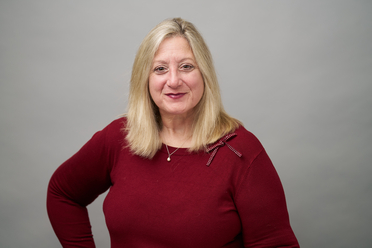
Carolynn Bruno
PhD APRN CNS FNP-C
Associate Dean for Graduate Programs (MS and DNP)
Clinical Associate Professor
csb6@nyu.edu
1 212 992 7018
433 First Ave
New York, NY 10010
United States
Carolynn Bruno's additional information
-
-
Carolynn Spera Bruno, PhD, APRN, CNS, FNP-C, is a Clinical Associate Professor at NYU Rory Meyers College of Nursing. She held the position of Assistant Dean of MS Programs at NYU Meyers in AY ‘24-25 and now serves as Associate Dean of Graduate Programs (MS and DNP) AY ‘25 to present. She teaches the research and evidence-based practice thread across NYU Master’s and DNP programs. In clinical practice, In clinical practice, Prof. Spera Bruno specializes in advanced practice nursing care of cardiac patients in electrophysiology.
She has developed innovative, evidence-based practice transitional care scenarios in atrial fibrillation for the Hartford Institute for Geriatric Nursing at NYURM. She has served on the American Heart Association (AHA) Cardiovascular Nursing Clinical Nursing Symposium Planning Committee; and as an AHA reviewer of the 2020 ACC/AHA Clinical Performance and Quality Measures for Adults with Atrial Fibrillation or Atrial Flutter. As a recipient of NYU University Research Challenge Fund (URCF), her research included Prescribers’ Decision Making when Transitioning Between Oral Anticoagulants. Bruno is the clinical editor ECG’s interpretation made incredibly easy! (8th ed.).
Spera Bruno is a Family Nurse Practitioner with interests in atrial fibrillation/flutter, oral anticoagulants, and symptom presentation of older adults in the presence of acute coronary syndrome. She works with cardiac patients at NYU Langone Health Electrophysiology and Non-Invasive Cardiology; and at YNNH Northeast Medical Group. She is a member of the American Academy of Nurse Practitioners and is nationally certified in Anticoagulation Therapy Management as an advanced practice nurse.
Her international presentations include the role of family practice for nurse practitioners and the future of advanced nursing practice at Sapienza Universita di Roma’s Medical and Nursing Schools. Consistent with her interest in moderating health disparity, she has provided direct clinical care to children and adults residing in remote areas of Nigeria.
Prior to joining the faculty at NYU in 2017, Carolynn Spera Bruno was the Specialty Coordinator at Yale University’s School of Nursing and directed the Adult Gerontological Primary Care Nurse Practitioner, Family Nurse Practitioner, and Women’s Health Adult-Gerontological Nurse Practitioner programs. She served as a board member, faculty advisor, and secretary of Sigma Theta Tau International – Delta Mu Chapter at Yale.
-
-
PhD in Nursing, University of ArizonaPost-MSN, FNP, Sacred Heart UniversityMSN in Clinical Nurse Specialist in Critical Care, University of PennsylvaniaBSN in Nursing, Fairfield University
-
-
CardiologyFamiliesChronic diseaseGerontologyNursing educationResearch methodsSimulation
-
-
American Academy of Nurse PractitionersAmerican College of CardiologyAmerican Heart AssociationHeart Rhythm SocietyNational Organization of Nurse Practitioner FacultiesSigma Theta Tau International - Upsilon Chapter and formerly Delta Chapter
-
-
Faculty Honors Awards
-
-
Publications
ECG Interpretation Made Incredibly Easy!
AbstractBruno, C. (2023). (8th ed.). Elsevier.AbstractClinical EditorInterpreting a 12-lead ECG
AbstractBruno, C. (2015). In ECG Interpretation Made Incredibly Easy! : Sixth Edition. Wolters Kluwer Health Adis (ESP).Abstract~Interpreting a rhythm strip
AbstractBruno, C. (2015). In ECG Interpretation Made Incredibly Easy! : Sixth Edition. Wolters Kluwer Health Adis (ESP).Abstract~Refining a telenovela intervention : Stakeholders' perspectives
AbstractCrist, J. D., Bruno, C., Ruiz, M. R., & Hepworth, J. T. (2013). In Geriatric Nursing (Vols. 34, Issues 2, pp. 158-161). 10.1016/j.gerinurse.2013.02.008AbstractUnderstanding Mexican American (MA) elders' use of home health care services (HHCS) and elders' reactions to interventions designed to increase HHCS use is vital to address disparities (e.g., MA elders use HHCS less yet have more disabilities with earlier onset than other groups). Dialog notes from a telenovela intervention and interviews with two additional elder-caregiver dyads were content analyzed and revealed ways to improve the telenovela, fitting with Narrative Theory. Further contributions by a community advisory council resulted in a revised script and illustrated how research participants and community members can shape interventions to achieve equity in vulnerable populations' healthcare utilization. -
-
Media